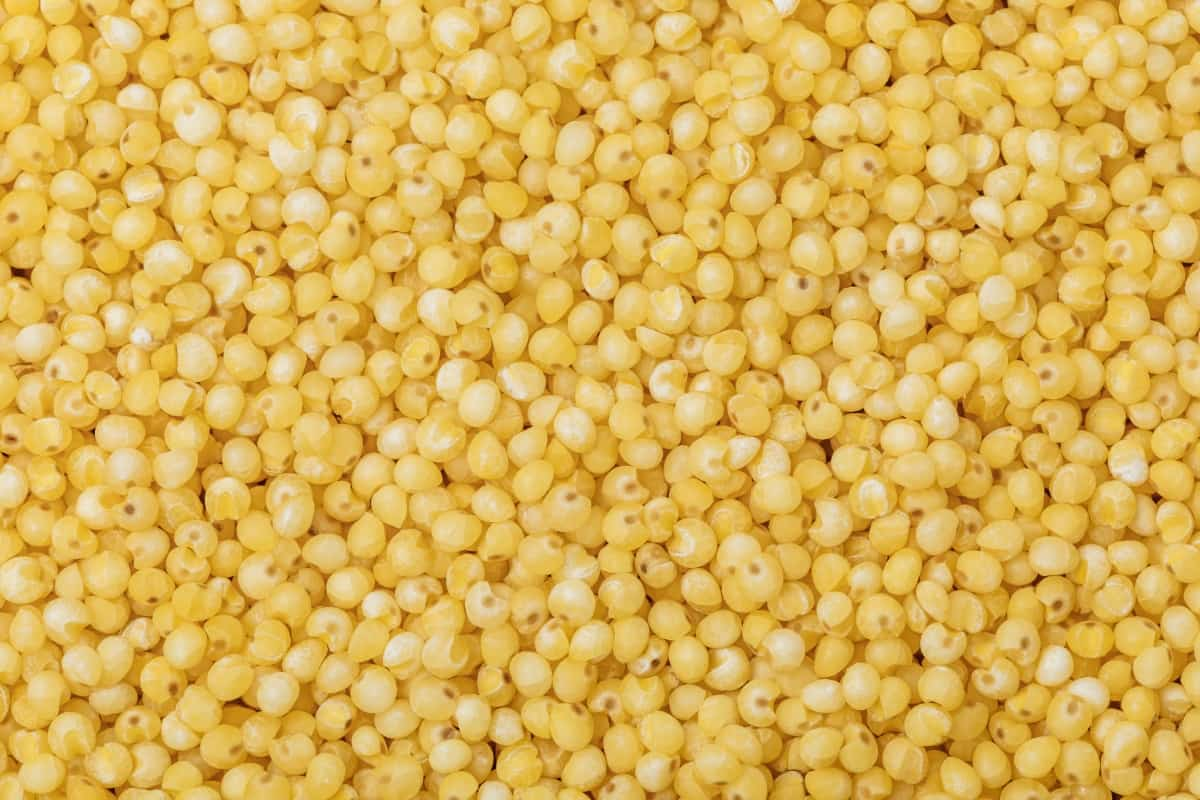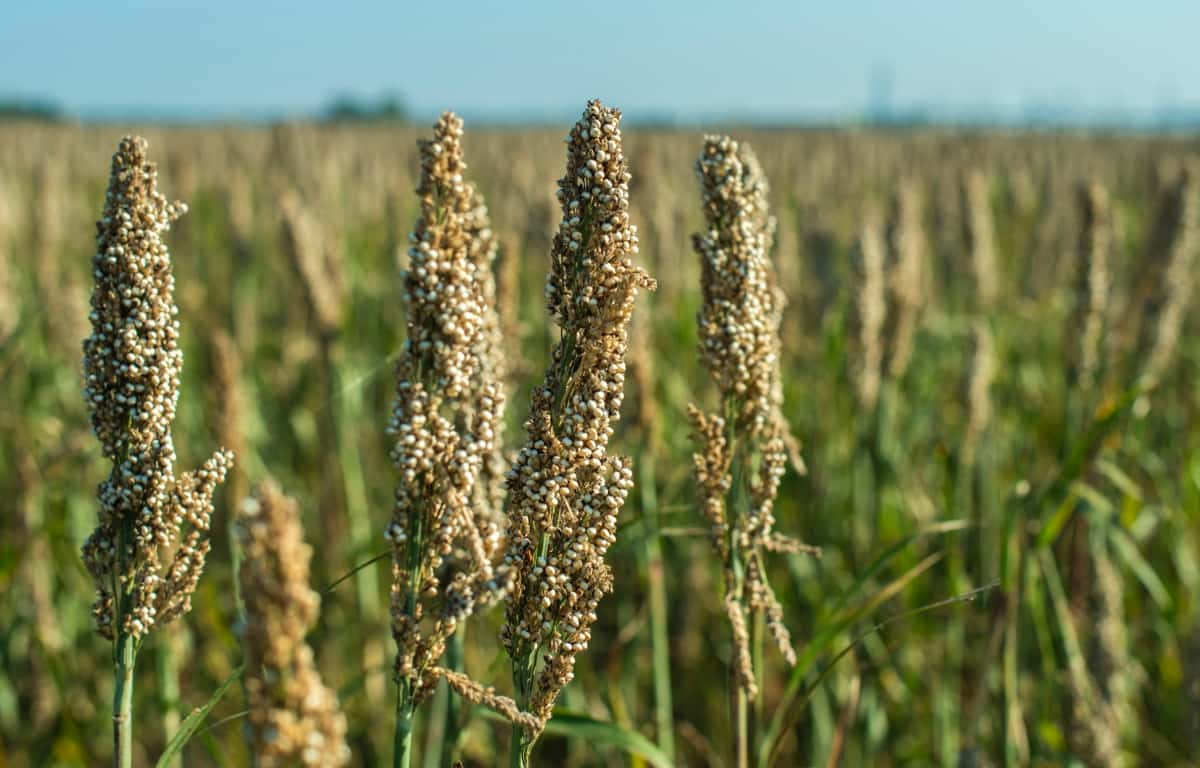Millet, a diverse group of small-seeded grasses, is highly valued as a staple cereal in many regions, particularly Africa and Asia. This underrated grain is known for its resilience to harsh weather conditions, nutritional benefits, and high-yield potential, making it an ideal crop for small-scale farmers in developing nations.

While many millet varieties exist, some of them, through careful breeding and selection processes, have emerged as high-yielding varieties suitable for cultivation by small-scale farmers. This article provides an in-depth overview of these high-yielding millet varieties and offers guidance on successfully growing them on small farms.
High Yielding Millet Varieties
Pearl Millet: A High-Yielding Variety for Drought-Prone Areas
One high-yielding millet variety ideal for small-scale farmers is pearl millet. It thrives in hot, dry regions where other cereals would typically fail, and it is highly adaptable to various soil types, including those with low fertility. Its ability to mature quickly and produce good yields, even under marginal conditions, makes it a lifeline for small-scale farmers, especially in drought-prone areas.
Pearl millet is also noted for its high nutritional value, containing higher levels of protein compared to other millets and essential minerals such as iron and zinc. High-yielding pearl millet varieties such as HHB 67 Improved, ICMV 221, and ICTP 8203 have been bred for improved grain and stover yields, early maturity, and resistance to pests and diseases. HHB 67 Improved, released by India’s Haryana Agricultural University, has shown yield advantages of up to 40% over local varieties.
It resists downy mildew, a common disease of pearl millet. ICMV 221, bred by the International Crops Research Institute for the Semi-Arid Tropics (ICRISAT), has been adopted by farmers in several countries due to its drought tolerance and resistance to diseases like ergot and smut. Similarly, ICTP 8203, another ICRISAT-bred variety, stands out for its high grain and stover yields and resistance to downy mildew and rust.
Finger Millet: An Ideal Crop for High-Altitude Areas
Finger millet is a productive millet variety ideal for small-scale farming. It is valued for its ability to withstand pests and diseases, endure drought conditions, and maintain excellent storage qualities. It’s most commonly grown in high-altitude regions and can produce reasonable yields on poor-quality soils with little input. High-yielding finger millet varieties like GPU 45, PES 400, and VL 149 have been developed, focusing on traits such as early maturity, high grain yield, and resistance to blast disease.
GPU 45, developed by the University of Agricultural Sciences, Bangalore, India, is preferred for its high grain yield and resistance to neck blast disease. The PES 400 variety, released by the Zonal Agricultural Research Station in India, is recognized for its high yield and tolerance to drought. VL 149, developed by Vivekananda Parvatiya Krishi Anusandhan Sansthan in India, has shown superior grain yield and resistance to blast disease.
Foxtail Millet: The Ancient Grain with Modern Appeal
Foxtail millet, one of the oldest cultivated varieties, is also a promising high-yield option for small-scale farmers. Known for its short growing season, it can grow in areas with low rainfall, making it an ideal crop for semi-arid and arid regions. Additionally, it is highly resistant to pests and diseases and tolerates infertile soils better than other cereals.
In case you missed it: Effective Strategies for Millet Disease Prevention, Treatment, and Control

The Prasad, SIA 3080, and SiA 3151 varieties stand out in terms of high-yielding foxtail millet varieties. Prasad, a variety developed by the Indian Council of Agricultural Research (ICAR), has been widely adopted due to its high grain yield, early maturity, and enhanced resistance to diseases like blast and rust. Similarly, the SIA 3080 and SiA 3151 varieties, developed by the Tamil Nadu Agricultural University, India, are well-regarded for their high yield, drought tolerance, and resistance to pests and diseases.
Proso Millet: A Versatile and Adaptable Crop
Proso millet, or broomcorn millet, is an incredibly versatile and adaptable crop tolerant to drought, heat, and poor soil conditions. This makes it an excellent choice for small-scale farmers in regions where other grains may struggle. Additionally, it requires less water than other cereals, making it a sustainable choice in water-scarce regions. Proso millet is a good source of protein and is rich in essential nutrients like manganese, phosphorus, and niacin.
When it comes to high-yielding proso millet varieties, those such as P 224, CO (Millet) 4, and CO 7 are highly recommended. P 224, developed by the Colorado State University, USA, stands out for its high grain yield, early maturity, and excellent straw strength, making it highly resistant to lodging. The CO (Millet) 4 and CO 7 varieties, developed by the Tamil Nadu Agricultural University, India, are recognized for their high yield, resistance to diseases and pests, and tolerance to drought.
Selecting High-Yielding Millet Varieties
The initial step for successful millet cultivation is selecting the appropriate high-yielding variety based on the local climate, soil, and growing conditions. As we’ve discussed, each millet variety has unique characteristics and needs. Pearl millet thrives in hot, dry regions; finger millet prefers cooler, high-altitude areas; foxtail millet is suitable for semi-arid regions; and proso millet can endure a wide range of growing conditions. By considering these factors, farmers can choose the millet variety that best suits their environment, ensuring a higher chance of a successful yield.
In case you missed it: Kodo Millets Production Guide: A Step-By-Step Cultivation Practices

Conclusion
Despite its nutritional and agronomic benefits, Millet has often been overlooked in favor of other staple cereals. However, with improved high-yielding varieties and an increased understanding of their cultivation practices, millets are gaining recognition as sustainable and nutritious crops for small-scale farmers. By embracing these high-yielding millet varieties—Pearl millet, Finger millet, Foxtail millet, and Proso millet—small-scale farmers can achieve better yields, improve their livelihoods, and contribute to food security in their communities.
A successful millet cultivation venture hinges on selecting the right variety and following appropriate agronomic practices, including timely sowing, proper spacing, adequate fertilization, and pest and disease management. Moreover, post-harvest processing and storage are vital in ensuring the grains’ quality and nutrition are preserved for consumption. Overall, with the right knowledge and resources, small-scale farmers can fully exploit the potential of these high-yielding millet varieties and play a crucial role in addressing food and nutrition security challenges.
- Feed Your Flock for Less: Top 10 Tips to Save on Chicken Feed
- Ultimate Guide to Ossabaw Island Hog: Breeding, Raising, Diet, and Care
- Hatching Answers: The Top 10 Reasons Your Chickens Aren’t Laying Eggs
- Eggs and Economics: Breaking Down the Cost of Raising Backyard Chickens
- Defend Your Greens: Proven Methods to Keep Iguanas Out of Your Garden
- Ultimate Guide to Cinnamon Queen Chicken: A Comprehensive Guide for Beginners
- Ultimate Guide to California Tan Chicken: Breeding, Raising, Diet, Egg-Production and Care
- Ultimate Guide to Marsh Daisy Chicken: Breeding, Raising, Diet, and Care
- 10 Types of Chicken Farming Businesses You Can Start for Profits